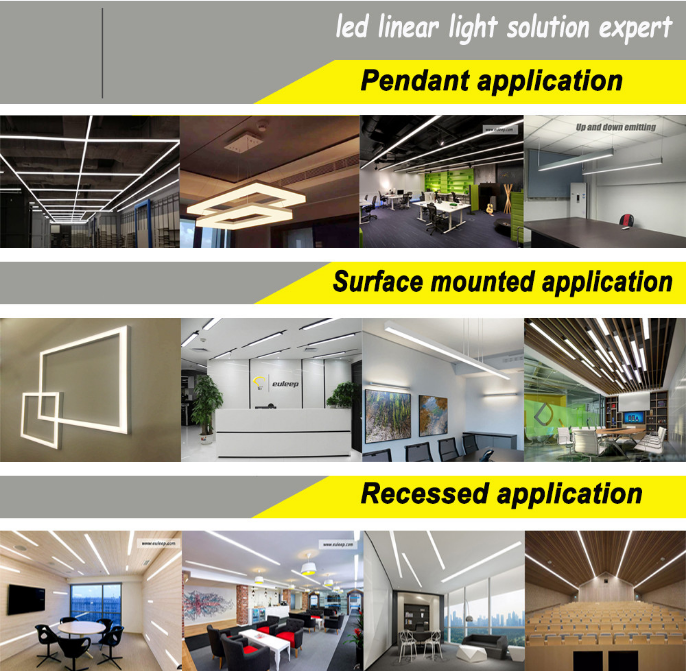Energy-saving emission reduction is the inevitable product of the development of the times, the future LED new energy will be brilliant. Society is progressing constantly, and the human-environmental protection consciousness is also strengthening unceasingly, therefore the country appeals: Everybody Must Protect our homeland. Today, various industries are also promoting the production of green products. For example, achieving peak carbon and carbon neutrality is one of the eight key tasks in 2021 by the Central Economic Work Conference, the 14th five-year plan is the key period to reach the peak of carbon emission in China.
Carbon Peak, Carbon-neutral
So, what is peaking carbon neutrality? Before that, let’s talk about carbon. When we talk about carbon in terms of carbon reduction, carbon trading, carbon footprint, low-carbon, or even zero-carbon, we mean all kinds of greenhouse gases emitted by human production and life. For the sake of statistical calculation, these gases are converted into Carbon dioxide equivalent (CO2e) depending on the extent of their impact, so CO2 is often used to refer to greenhouse gases, and peaking is a region or industry, the annual greenhouse gas emissions reached the highest level in history, which was the turning point of the greenhouse gas emissions from increasing to decreasing, and marked the transition of economic development from high emissions to clean and low energy consumption.
Carbon neutrality refers to the total amount of carbon emitted directly and indirectly by human activities in a given area over a given period (generally a year), offset by the total amount of carbon absorbed through Afforestation, industrial sequestration, etc., net-zero carbon.
Carbon peaking and carbon neutralization complement each other. As a result of Afforestation, the amount of carbon that can be absorbed by industry, such as carbon sequestration, is relatively fixed and far less than the amount emitted by industrial development.

So, to achieve the carbon neutrality vision, we have to reverse the growth trend of carbon dioxide emissions by developing and implementing a carbon peak program. In addition, the higher the peak of carbon emissions, the better. The higher the peak of carbon emissions, the more difficult it will be to achieve carbon neutrality, the longer it takes, the more carbon-intensive a project will be, and the more carbon-intensive it will be, the more carbon-intensive it will be over the long term. This will lock in carbon emissions, making the industry highly efficient and low-carbon for decades to come, a carbon-free situation.
There is enormous pressure to meet the goal of carbon neutrality by 2060.
Our country is faced with more stringent time and larger emission reduction requirements than developed countries. Achieving carbon peak and carbon neutrality is the central government’s unswerving commitment to green and low-carbon development in response to global climate change, high-level protection is the only way to ensure high-quality development. All departments and industries must work together to fulfil their responsibilities and take the initiative to make their due contribution to the overall green transformation of the economy and society.
So how can LED companies’ R & D design not produce light pollution and waste energy LED lights? This has become an important product performance that production companies must address. Carbon neutrality must be implemented for everyone. Only with the earth around can we benefit our future generations and have a bright future. Truly achieve the harmonious development of man and nature, take the road of sustainable development.
And LED lights have been widely used in every street corner of the city, have become a unique symbol to enhance the image of the city, but it beautifies the image of the city at the same time, the strong light on the screen also harms the nightlife of urban residents. Although the LED industry is a”Light-making” industry, the display”Light-making” is not wrong, but from the city’s environmental pollution indicators measure, it has degenerated into a new type of pollution, “Light pollution”. Therefore, an enterprise should pay attention to”Light pollution” in production, and should control the brightness of the setting.
The first control method is the use of an automatic brightness regulation system.
Depending on the day and night, a slight change in display brightness can have a dramatic effect in different locations and periods. If the LED playing brightness is more than 50% of the ambient brightness, we will feel discomfort in the eyes, which caused”Light pollution.”.
Then we can collect the ambient brightness at any time through the outdoor brightness collection system, and the display screen control system by receiving system data and through the software automatically converting to the brightness suitable for the environment to broadcast the screen.
The second control method is multi-level grey correction technology.
The common LED lighting system uses 18-bit color display levels, so in some low-grey and excessive colors, the color will be displayed very rigid, so it will cause color light not to adapt. The new LED large screen control system uses a 14-bit color display level, greatly improving the color on the excessive hardness, so that people feel soft color when watching, to avoid people’s discomfort with light.
In terms of power consumption, although the LED displays themselves use light-emitting materials to save energy, some need to be used in the display area of the occasion, because of long-term use, the overall power consumption is still large, because of the high brightness required, the combined effect of these factors is that the display’s power consumption is staggering, and the cost to advertisers will increase geometrically.

So companies can save energy by:
(1) high-efficiency LED can be used, light-emitting chips do not cut corners;
(2) using high-efficiency switching power supply, greatly improving the power conversion efficiency;
(3) the excellent heat dissipation design of the screen body to reduce the power consumption of the fan;
(4) design a scientific overall circuit scheme to reduce internal power consumption;
(5) automatically adjust the brightness of the outdoor display screen according to the change in the external environment, to achieve the effect of energy saving and emission reduction.
What kind of light is the most energy-saving environmental protection?
LED solar lights
LED solar lights is an electric light that is converted from solar panel to electric energy. During the day, even on cloudy days, this solar generator (solar panel) can also collect and store solar energy. As a kind of safe and environment-friendly new electric lights, solar energy lights are paid more and more attention.
The structure of the solar lights
The solar energy lights are composed of the solar energy battery module, the LED lights, the control box (the control box has the Charger, the controller, the accumulator), and the lights pole. The solar panel light efficiency reaches 127WP/M2, and the efficiency is higher, which is very beneficial to the wind-resistant design of the system The light heads part uses 1W white LED and 1W yellow LED integrated on the printed circuit board as the flat light source.
The control box is made of stainless steel, which is beautiful and durable, and the control box is provided with a maintenance-free Lead-acid battery and a solar street light special Charge controller which is developed by using the patented technology of slow pulse fast charge and discharge. The valve-controlled sealed Lead-acid battery, also known as a “Maintenance-free battery” because of its low maintenance, helps to reduce system maintenance costs; The charge-discharge controller is designed with full functions (including light control, time control, over-charge protection, over-discharge protection, and back-connection protection) and cost control to achieve the high performance-price ratio
Principles of technology
A solar cell is made from the principle of the photovoltaic effect. During the day, the solar panel receives the solar radiation energy and converts it into electrical energy output, which is stored in the battery through a charge and discharge controller, at night, when the illumination is reduced to about 101ux and the open-circuit voltage of solar panel is about 4.5 V, the charge and discharge controller detects the voltage and the battery discharges the lights. After 8.5 hours of battery discharge, charge, and discharge control action, battery discharge end. The main function of the charge and discharge controller is to protect the battery.
Development trend
Electricity from photovoltaics is an irreversible flow of energy. China has become the world’s second-largest electricity consumption market after the United States, and its demand growth rate is the fastest in the world. However, due to the shortage of oil and coal resources, the existing power generation methods can not meet the demand for electricity consumption. For the market, accelerating development, the solar cell industry is bound to be promising.
In the future, carbon neutrality must be an era of everyone’s participation, and everyone must act on it. For our bright future, we must work together to create a sustainable future. LED solar lights must be a household name.
If you want to know more about LED lights, please don’t hesitate to get in touch with us.
website: www.enetcl.com
Whatsapp: +86 158 7620 7215
E-mail: anna@enetcl.com




